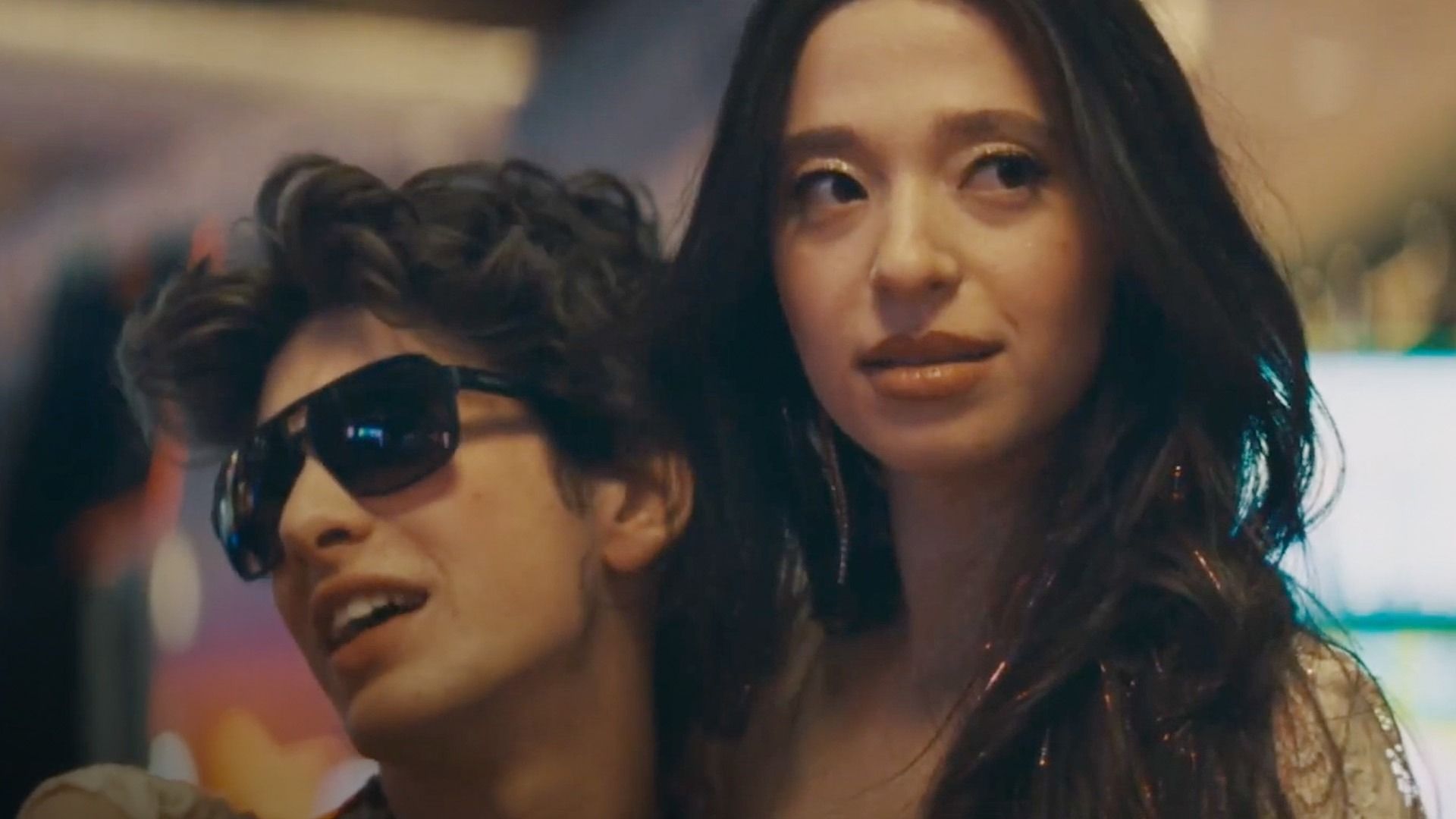Anora Ending Explained - Unraveling The Final Moments
There's something truly special about a story that sticks with you, isn't there? You know, the kind that leaves you pondering long after the credits roll or the final page turns. For many, that's exactly what happened with "Anora," a tale that, to be honest, left quite a few folks scratching their heads, wondering what it all really meant. It's almost like the creators wanted us to sit with those last scenes, to really chew on them a bit.
So, we're here to chat about those closing moments of "Anora," the parts that might have felt a little hazy or, you know, just begged for a closer look. It's not uncommon for a powerful narrative to wrap up in a way that sparks discussion, and "Anora" certainly did just that. We'll try to sort through some of the big questions people have been asking about how things wrapped up, particularly focusing on the fate of its central figures and the true meaning behind those final, quiet scenes. What did that last shot truly convey?
This discussion will try to pull apart the various threads that came together at the story's close. We'll consider the choices made by the characters, the subtle hints dropped throughout the story, and how everything culminated in that powerful, if somewhat mysterious, conclusion. It's a chance to really dig into the heart of what made "Anora" such a compelling experience for so many viewers and readers alike, trying to shine a light on the story's ultimate message.
Table of Contents
- The Anora Ending - What Actually Happened?
- Unpicking the Final Scene of Anora Ending Explained
- The Meaning Behind Anora's Final Choice
- Was the Anora Ending a Dream or Reality?
- Character Fates After the Anora Ending Explained
- The Symbolism in the Anora Ending Explained
- Fan Theories and Alternative Anora Ending Explanations
- What Does the Anora Ending Tell Us About Destiny?
The Anora Ending - What Actually Happened?
The story of Anora, as many remember, really built up to a moment of significant decision. The world, as we knew it, was poised on the brink of something truly transformative. Anora, the central figure, found herself standing at the very edge of the Whispering Chasm, a place spoken of only in hushed tones, where legend said one could alter the very fabric of existence. The air around her, you know, felt thick with expectation, almost humming with an unseen energy. She held the Lumina Shard, a relic of immense power, which, apparently, could either restore balance or, quite possibly, shatter everything into a million pieces. This was a really big moment for her, a turning point.
As the ancient prophecy foretold, the Convergence of Stars was upon them, aligning just above the Chasm. This celestial event was the window, the one chance to use the Shard. The Elder Council, typically so rigid in their ways, had given Anora their blessing, though you could tell they were, in some respects, very hesitant, their faces etched with deep concern. They knew the immense weight of the task that rested on her shoulders. Her long-time companion, Kael, stood nearby, his face a mask of worry, yet his presence offered a quiet sort of support. He had been with her through so many trials, and this, well, this was the ultimate test. It was a moment where everything hung in the balance, quite literally.
The actual act of the ending involved Anora raising the Shard as the final star clicked into place. Instead of a grand explosion of light or a dramatic shift in the landscape, what happened was, in a way, far more subtle, yet profoundly impactful. The Shard didn't glow with blinding intensity; rather, it absorbed the starlight, pulling it into itself, almost like a thirsty sponge. Then, a gentle, shimmering wave, nearly invisible, radiated outwards from the Chasm. It wasn't a destructive force, but something that seemed to whisper through the land, touching everything. This quiet, rather unexpected outcome, is a big part of why the Anora ending explained discussions are so lively.
Unpicking the Final Scene of Anora Ending Explained
The very last scene of Anora, after that gentle wave, showed Anora herself, standing there, still by the Chasm, but with a look on her face that was, to be honest, a little unreadable. Kael, who had been watching her so intently, took a step closer, his hand reaching out, but then, in a rather surprising move, he stopped. The world around them, you know, seemed unchanged at first glance. The trees still stood, the wind still blew, and the stars, well, they were still in the sky, though the Convergence had passed. This apparent normalcy is what makes the Anora ending explained so intriguing; it challenges our expectations.
What truly caught many people's attention was the brief, almost fleeting, glimpse of a small, vibrant bloom pushing through the cracked earth at Anora's feet. This wasn't just any flower; it was an Aethel-bloom, a type of plant believed to have been extinct for centuries, a symbol of pure life and renewal. Its presence, so tiny yet so striking against the barren ground, suggested something profound had indeed happened. It was a very subtle detail, yet it carried so much weight. This little bloom, in some respects, felt like a quiet promise.
Then, Anora turned her head, looking not at Kael, but towards the horizon, where the first rays of dawn were just beginning to paint the sky. A faint smile, a really gentle one, touched her lips. It wasn't a smile of triumph or relief, but something more akin to quiet understanding, perhaps even a touch of sadness. Kael, seeing this, simply lowered his hand, a sense of acceptance washing over his face. The scene faded to black right then, leaving us with that image of Anora, facing the new day, and that tiny, resilient flower. This quiet conclusion, without a big, dramatic flourish, really makes you think about the Anora ending explained in a different light.
The Meaning Behind Anora's Final Choice
Anora's decision to use the Lumina Shard in the way she did, by absorbing the starlight rather than unleashing it, speaks volumes about her character and the story's core message. Many expected a dramatic, perhaps even violent, resolution, a display of immense power that would force the world into a new state. But Anora, you know, chose a path of quiet integration. It's almost like she understood that true change often comes not from brute force, but from a more subtle, internal shift. This choice is, arguably, the heart of the Anora ending explained.
Her action suggests a rejection of the traditional heroic narrative, where a single individual "fixes" everything with a grand gesture. Instead, she seemed to understand that the world's problems, the deep-seated imbalances, couldn't just be wiped away by a flash of light. Rather, they needed a more gradual, organic healing. By absorbing the starlight, she didn't just wield power; she, in a way, internalized it, becoming a conduit for a more gentle kind of transformation. This approach, to be honest, was quite revolutionary within the story's own context.
The gentle wave that radiated from the Chasm, and the subsequent appearance of the Aethel-bloom, support this idea. It wasn't about instant, overwhelming change, but about planting a seed, allowing life and balance to slowly re-emerge from within the damaged world. Anora's final, quiet smile, you know, might suggest a deep acceptance of this long, perhaps difficult, process. She chose not to be a conqueror, but a gardener, tending to the slow growth of a new future. This interpretation really helps to make sense of the Anora ending explained, showing a character who prioritizes quiet hope over grand spectacle.
Was the Anora Ending a Dream or Reality?
This question, "Was the Anora ending a dream or reality?", is one that pops up a lot when people talk about the story. The subtle nature of the changes, the almost ethereal quality of the final scene, has led some to wonder if Anora's experience was, in fact, just a vision, or perhaps a symbolic journey rather than a literal one. The lack of a big, obvious shift in the physical world, to be honest, does lend a little credence to this idea. It makes you think, doesn't it?
However, the appearance of the Aethel-bloom, that very real, tangible flower pushing through the ground, strongly suggests that something concrete did occur. While the changes might not have been immediately dramatic or visually overwhelming, the bloom acts as a very clear sign that the world was, indeed, affected. It's almost like a quiet confirmation that Anora's actions had a genuine, physical impact, even if it was a subtle one. This little detail, you know, grounds the ending in reality, even with its mystical elements.
Moreover, Kael's reaction, his visible worry and then his eventual acceptance, also points to the reality of the situation. He was there, witnessing it all, and his emotions seemed very much tied to a real event, not a shared hallucination. While "Anora" certainly has elements of the fantastical and the metaphorical, the story generally grounds its most significant events in a tangible reality. So, while the ending might feel a bit dreamlike in its gentle unfolding, it appears to be a very real culmination of Anora's journey and her powerful choice. It really makes you consider the depth of the Anora ending explained, doesn't it?
Character Fates After the Anora Ending Explained
The story leaves us with a sense of quiet continuation rather than a definitive "happily ever after" for its characters, particularly after the Anora ending explained. Anora herself, standing at the dawn, seems to have accepted a new role, one of stewardship rather than active heroism. Her journey, you know, feels far from over, but its nature has fundamentally shifted. She's no longer just trying to save the world; she's now, in a way, responsible for nurturing its slow recovery, a much longer and perhaps more demanding task.
Kael's fate is perhaps even more open to interpretation. His acceptance at the end could mean many things. Did he decide to stay by Anora's side, continuing to support her in this new, quiet endeavor? Or did his acceptance signify his understanding that her path was now one she had to walk mostly alone, a path he couldn't fully share? The narrative, to be honest, leaves this wonderfully ambiguous. It's almost like the story wants us to imagine their future, to fill in those blanks ourselves. His presence, or lack thereof, in the immediate aftermath is a key part of the Anora ending explained discussions.
As for the Elder Council and the wider world, the subtle wave of change suggests a gradual shift rather than an immediate upheaval. The problems that plagued the land wouldn't just vanish overnight. Instead, the ending hints at a slow, perhaps even generational, process of healing and renewal. The Aethel-bloom is a promise, a symbol of hope, but not an instant solution. So, the characters, like the world itself, are left on a path of slow evolution, facing a future that is, in some respects, still very much unwritten, yet now holds a quiet promise. This open-endedness is a really compelling aspect of the Anora ending explained.
The Symbolism in the Anora Ending Explained
The Anora ending is rich with symbolic meaning, offering layers of interpretation for those who like to dig a little deeper. The Whispering Chasm itself, for instance, represents not just a physical location, but a threshold, a place of profound decision and transformation. It's where the old ways meet the potential for something entirely new. The fact that it "whispers" suggests that true change often begins with quiet promptings, subtle urges, rather than loud pronouncements. This setting is, you know, pretty central to the Anora ending explained.
The Lumina Shard, too, holds significant symbolic weight. It's not just a powerful artifact; it embodies the potential for both destruction and creation. Anora's choice to absorb the starlight, rather than unleash it, symbolizes a move from reactive power to proactive, nurturing influence. It's a statement about how true strength might lie in integration and gentle guidance, rather than overwhelming force. This choice, to be honest, is a powerful symbol in itself, showing a different kind of heroism.
And then there's the Aethel-bloom, that tiny, resilient flower. This little bloom is perhaps the most potent symbol of all in the Anora ending explained. Its reappearance signifies renewal, hope, and the enduring power of life even in the most desolate circumstances. It tells us that even after great struggle and apparent destruction, life finds a way to return, to flourish, albeit slowly. It's a very powerful image, suggesting that the true victory isn't about ending conflict, but about fostering growth and allowing life to begin again, quietly, persistently. This symbolism truly elevates the story's conclusion.
Fan Theories and Alternative Anora Ending Explanations
The open-ended nature of the Anora ending has naturally led to a thriving community of fan theories, with people trying to piece together their own versions of what really happened. One popular theory suggests that Anora didn't just absorb the starlight, but that she, in a way, became one with it, transforming into a guardian spirit of the land. Her quiet smile and distant gaze, you know, could be seen as evidence of this elevated state, no longer fully human but something more. This idea, to be honest, offers a rather mystical alternative to the straightforward interpretation of the Anora ending explained.
Another compelling theory posits that the entire final sequence was a metaphor for Anora's internal struggle and personal growth. In this view, the Whispering Chasm represents her own inner turmoil, and the Lumina Shard symbolizes her capacity for self-acceptance and healing. The "change" in the world, then, is really a change within herself, allowing her to finally find peace and a new purpose. This interpretation really focuses on the personal journey, making the Anora ending explained a deeply psychological one.
Some even propose a darker, more cynical reading, suggesting that Anora's actions, while seemingly benevolent, merely delayed an inevitable, greater catastrophe. They argue that the subtle nature of the change indicates a lack of true resolution, and that the Aethel-bloom is just a temporary reprieve before the world's deeper issues resurface. This perspective, you know, adds a layer of tragic realism to the ending, suggesting that some problems are just too big to be "fixed" completely. These varied viewpoints really show how much the Anora ending explained resonates with different people.
What Does the Anora Ending Tell Us About Destiny?
The Anora ending, in many respects, offers a very thought-provoking take on the concept of destiny. Throughout the story, there's a strong undercurrent of prophecy and predetermined paths. Anora is, in a way, chosen for this monumental task, seemingly fated to stand at the Chasm with the Shard. However, her ultimate choice, the manner in which she uses the power, suggests that destiny isn't a rigid, unchangeable script. It's almost like she had agency within the grand design, the ability to shape the outcome, even if the stage was set for her. This particular aspect really makes you ponder the Anora ending explained.
Her decision to choose a path of subtle healing rather than dramatic intervention indicates that while a certain event might be destined to occur, the *how* of it, the *manner* of its unfolding, remains within the individual's power. It implies that true destiny isn't about following a precise set of instructions, but about making meaningful choices within the framework of what's presented to you. Anora didn't just fulfill a prophecy; she, in a way, reinterpreted it, giving it a new, more nuanced meaning. This is, to be honest, a pretty powerful message about free will.
The quiet, almost understated conclusion of the story reinforces this idea. There's no sense of a grand, final resolution that ties up every loose end, which would be typical of a story where destiny is an absolute force. Instead, the ending points to an ongoing process, a continuous unfolding where choices, big and small, still matter. It suggests that destiny isn't a destination, but a journey, and that even when faced with immense pressure, an individual can, you know, forge their own unique path within it. This perspective on destiny is a key takeaway from the Anora ending explained.

Anora - 2024 filmi - Beyazperde.com

The Plaza Cinema & Media Arts Center - Anora

'Anora' Wins Best Original Screenplay